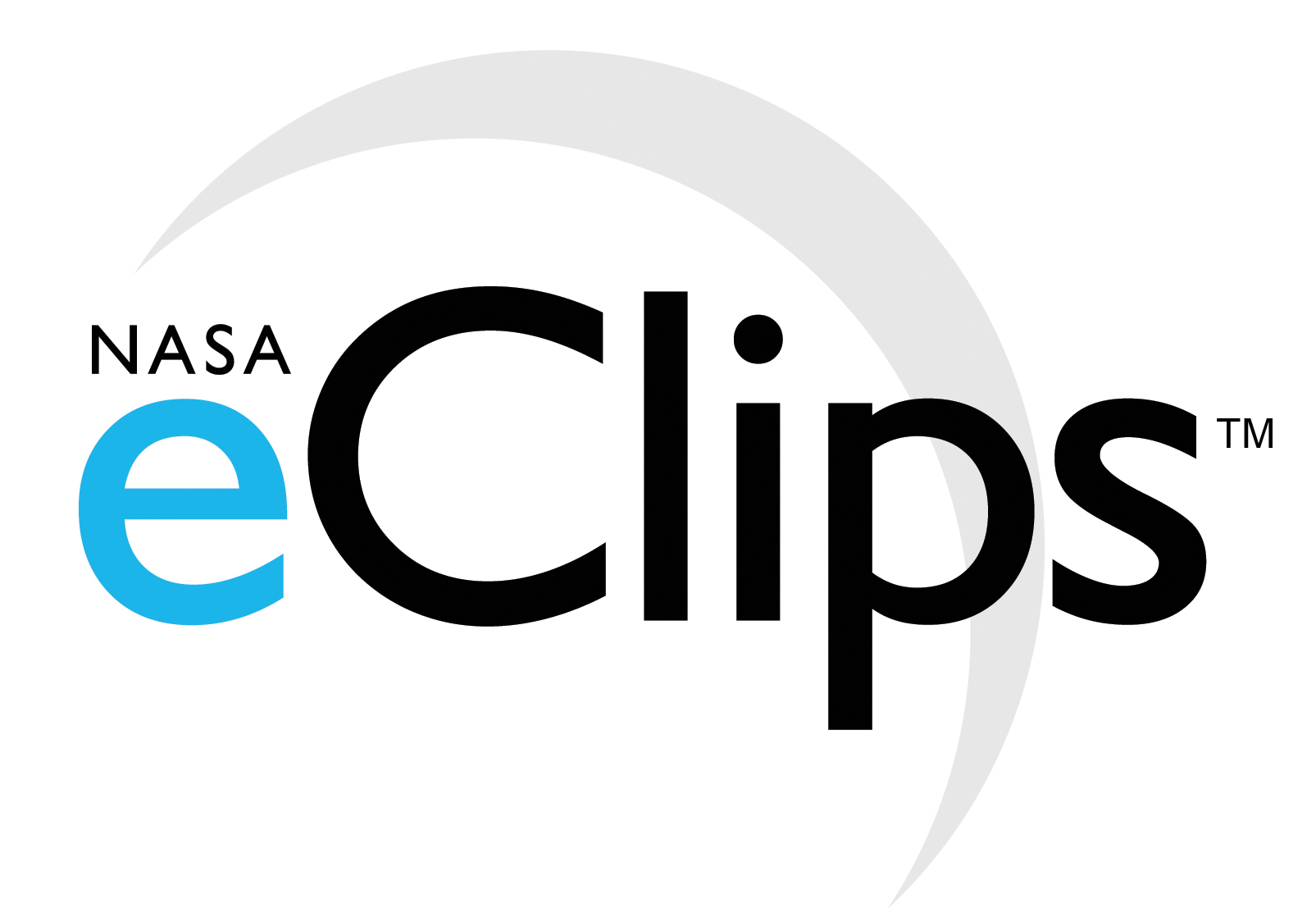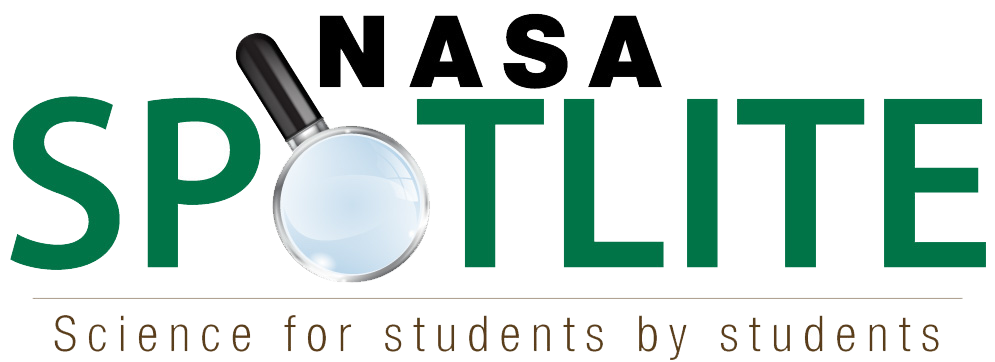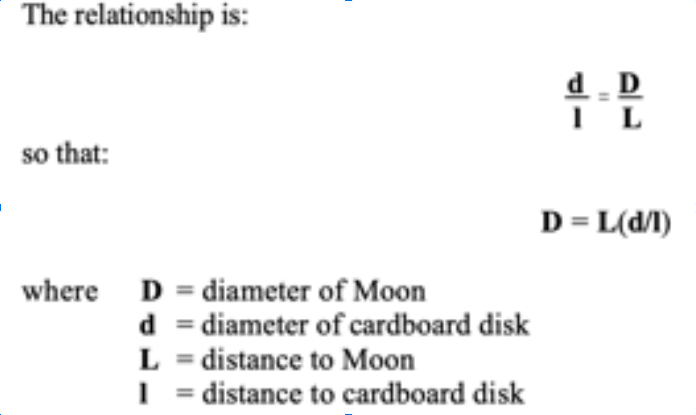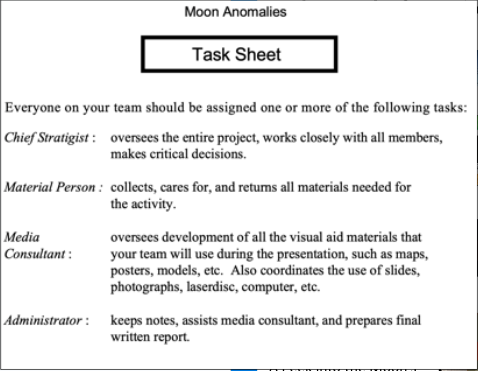NASA eClips™ Videos

Our World: Moon Phases
What causes the phases of the Moon? From New Moon to Full Moon, the Earth-Sun-Moon system is responsible for the Moon's changing phases. Learn more about rotation, revolution and this repeatable pattern using NASA animations.
Our World: The Moon's Impact on Earth
The Moon impacts Earth through tides and Moonlight. NASA missions to the Moon continue to help us discover more about our nearest neighbor. Learn more about Moon mapping and resources.
Our World: Lunar Rock
Learn about NASA's Lunar Sample Laboratory Facility at Johnson Space Center in Houston, Texas. See how NASA protects these precious Moon rocks brought to Earth by the Apollo astronauts. Explore the special storage boxes filled with nitrogen where the Moon rocks are kept.
Our World: The Rock Cycle
Rocks from the Apollo mission helped NASA learn more about the rock cycle. Compare rocks found on Earth to three types of rocks found on the Moon.
Launchpad: Maps
Learn how NASA uses robotic spacecraft to make geologic maps of the topography and composition of places like Saturn, Titan, or Earth’s Moon.
Launchpad: Solar Eclipses
Find out about the unique geometry and the distances and sizes of the Sun and Moon as seen from Earth that allow us to witness a solar eclipse.
Engineering Design
Real World: Preparing for a Soft Landing
Thinking and acting like engineers, they design and build models representing Orion, calculating the speed and acceleration of the models.
Engineering Design Packet
The leveled packets can be used with any challenge to guide students through the engineering design process.
How We Are Going to the Moon
Watch to see the plans for the Artemis mission. Artemis is NASA's plan to land the first woman and the next man on the Moon by 2024.
NASA/Design Squad Touchdown
Follow the engineering design process to design and build a shock-absorbing system to protect two marshmallow "astronauts" when they touch down.
NASA Spotlite Videos

Student-produced videos confronting misconceptions.
NASA Spotlite: Moon Phases and ShadowsStudent producers from Arizona State Preparatory Academy confront the misconception that other objects in space causes the phases of Earth's Moon.
NASA Spotlite Interactive Lessons
Moon Phases
Through watching a student-produced video, completing activities, explaining relevant concepts using new vocabulary using a Frayer Model, and applying new information, students will develop an understanding of the science content and how to correct the science misconception.
Read MoreNASA Spotlite Design Challenge
Design Challenge
Teams are challenged to produce a video to improve scientific literacy. The goal of the video is to engage other students in doing activities that can help change their misconceptions about a topic in science.

Join the NASA Spotlite Production Team!
Help others correct misconceptions about moons
Join
Maps and Diagrams
Night Sky Network - Observing the Moon
Use this Moon map handout to identify features on the Moon. Find out where the astronauts landed and discover what fills the Moon's famous "seas".
An Earth-based Tour Of The Moon
Students use their eyes, binoculars and telescopes to make observations about the Moon.
NASA eClips Educator Guides
Distance to the Moon
In this activity participants will use sports balls as scale models of Earth and the Moon and use string to demonstrate the mathematical relationship between the size of Earth and the Moon and the distance between the two.
Our World: Dirt
Students review the rock cycle for rocks on Earth and learn about three types of lunar rocks. Students analyze simulated lunar regolith to make inferences about the formation of regolith.
Crater Maps
In this activity participants will make a crater map and compare the geologic features of the Moon to those on Earth.
Science Inquiry
Formation of Moon’s Crust
Low density magmas rise forming crusts. This process is called differentiation. Students will simulate the process of differentiation.
Lunar and Planetary Institute - Mirror Moon
Investigate the source of the Moon's light using a ball, wrapped in aluminum foil. Experiment with a flashlight to make the Moon appear bright
Math Connections
Rock ABCs Fact Sheet
Approximate mineral abundances (percentages) in Moon rocks.

Diameter of the Moon
Student use a ratio to calculate the diameter of the Moon using proportions.

Space Math - LRO Explores Lunar Surface Cratering
Solve problems involving measurements of distance and area.
Creating Models and Visual Representations
Make a Moon Phases Calendar and Calculator
Build a Moon phases calendar and calculator.
Modeling the Earth-Moon System
This Earth-Moon system is one way to accurately represent the scale size of Earth and the Moon, as well as the distance between them.
The Moon's Phases in Oreos
Oreo "Moons" show how the Moon looks from Earth during these phases
Build Your Own Cutout Moon
Build a paper model of the Moon with a lander on top.
Orion Desktop Model
Download, print and build a paper model of this new vehicle
Kinesthetic / Tactile
Night Sky Network - Moon Phases and Orbit
Got a toothpick and a Styrofoam or clay ball? You can easily find out why the Moon has phases in less than two minutes.
Lunar Landscapes for 3D Printers
NASA’s 3D Resources site has a collection of 3D models, textures, and images of Moon landing sites and NASA spacecrafts. The ‘stl’ files are available to download for students who have access to 3D printers.
Performance Assessment
Moon Anomalies
In this activity teams of students will present hypotheses that attempt to resolve four anomalies of the Moon. They will be expected to prepare written and oral presentations.

Partner and Other Resources
Literature & Story Telling
What Do You See in Today's Moon?
Students can read or listen to a cultural story describing a shape identified in the Moon's surface features. Then, based on what they learned about the Moon, students design their own object or character that they could see when they look at the Moon.
Write a Poem About Space Students learn about different kinds of poems and find out how to create poetry inspired by space.
Online Interactives
NASA Science Explore Earth’s Moon
On this interactive website decide which features you want to explore.
Apollo 11 in Real Time or Last Mission to the Moon
A real-time journey through the first landing on the Moon or the Apollo 17 mission.
Make a Moon or Mars Rover Game
Think like NASA space-mission planners to create a Moon or Mars exploration game using Scratch, a visual programming language.
Infiniscope Space Explorations Moon Phases
Explore the phases of the Moon in this cool 80's retro style experience featuring your AI friend LuCIA. Use a model to identify inaccuracies in LuCIA’s coding.
Background Information
-
NASA Posters
Poster lovers can choose an image to learn more about the Moon.
-
Nat Geo Kids Facts about the Moon
This online magazine lists facts about the Moon.
-
NASA Space Place - Types of Full Moons
Learn about the Super Moon, Blood Moon, Blue Moon and Harvest Moon.
-
Lunar and Planetary Institute Poster
A Peek into the Moon’s Interior
-
Lunar Reconnaissance Orbiter (LRO)
LRO is a robotic mission that set out to map the Moon’s surface.
